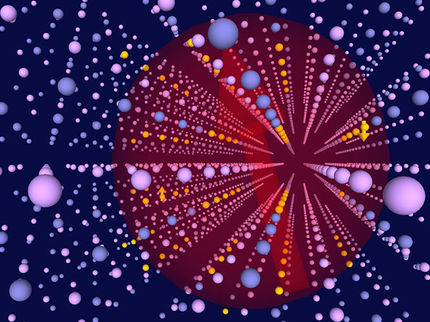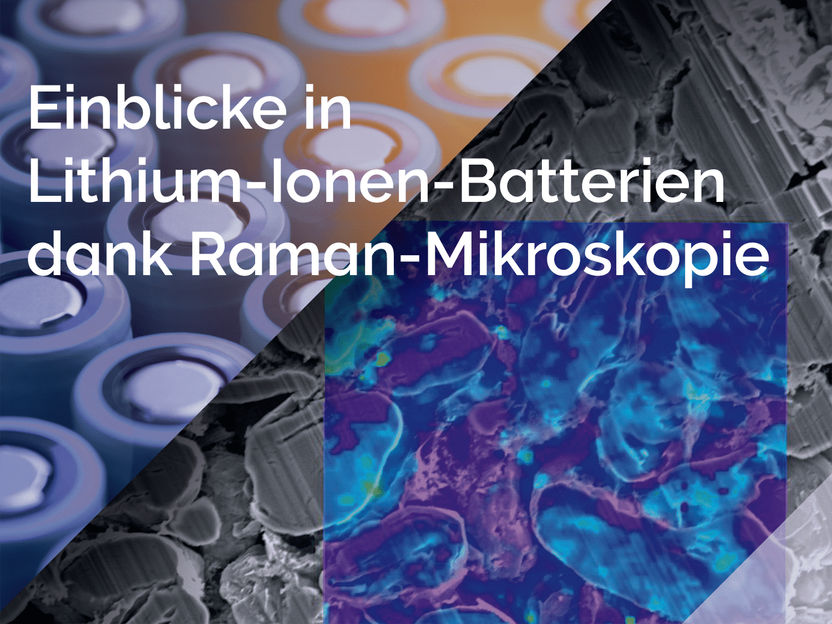Cerium hexaboride challenges physicists to come up with new theory
Scientists from MIPT and other research institutes and universities have discovered unusual phenomena occurring in a single cerium hexaboride (CeB6) crystal. By performing an electron spin resonance (ESR) experiment, the researchers confirmed the status of the material that had been dubbed an "exception to exceptions" for the way its behavior defies any explanation in terms of the existing models and conventional theories.
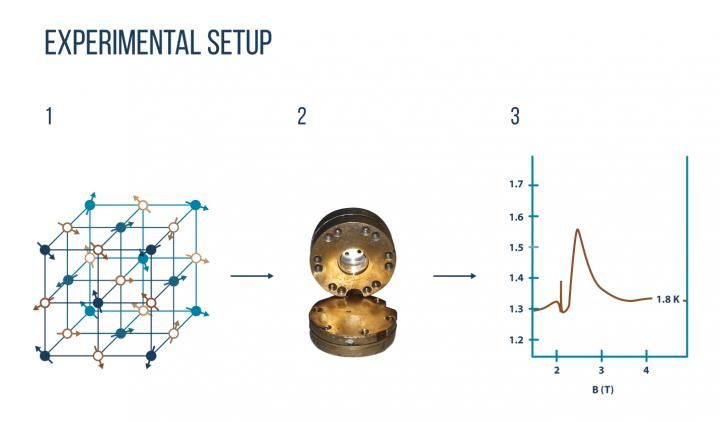
1. Complex magnetic structure of cerium hexaboride. 2. Part of the ESR setup: the cylindrical microwave cavity where the sample is placed. 3. Resonance curve obtained in an ESR experiment.
MIPT Press Office
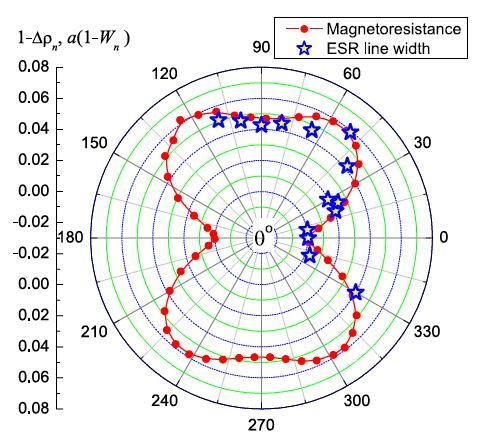
Angular dependences of magnetoresistance (red) and ESR line width (blue) measured under sample rotation in an external magnetic field.
MIPT Press Office
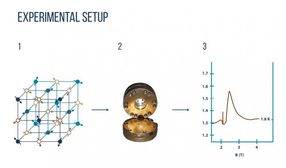
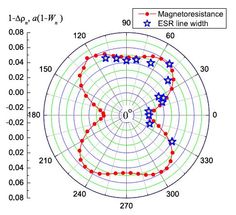
Experimental findings of this kind offer a way to test the validity of the accepted scientific theories. By implication, recognizing the fundamental results of such research is much more important than seeking new practical applications for this particular material.
Despite being studied for over 40 years, cerium hexaboride never stops challenging our understanding of the physics behind its unusual properties. It is a compound that belongs to the class of strongly correlated materials, i.e., materials whose properties cannot be described adequately without taking into account the interactions between electrons (aka electronic correlation). Up to now, many theories have been proposed to explain the anomalous physical properties of cerium hexaboride, but they all proved unable to predict the results of ESR experiments. It might be the case that the theory of ESR in strongly correlated systems needs to be substantially improved in order to account for the exceptional behavior of cerium hexaboride.
ESR spectroscopy is used to study samples that contain particles with unpaired spins, viz., electrons and radicals. The sample is placed in a steady magnetic field and exposed to microwave radiation. As a result, an ESR spectrum of the sample is obtained, from which data on its chemical structure and properties can be extracted. Absolute calibration of ESR spectra in units of magnetic permeability and ESR spectral line shape analysis enable scientists to find the spectroscopic parameters: g-factor (gyromagnetic ratio), line width (spin relaxation time), and oscillating magnetization or dynamic magnetic susceptibility.
ESR in cerium hexaboride was reported in an earlier study by the same authors. They developed a unique experimental technique capable of picking up the ESR signal from cerium hexaboride and similar materials. Conventional ESR spectrometers often face considerable difficulties detecting signals from strongly correlated materials.
The experimental findings turned out to be rather unexpected for the researchers. For one thing, their measurements showed that the oscillating magnetization along the [100] crystallographic direction may exceed the total static magnetization of the sample. This runs contrary to the commonsense expectation (and theoretical predictions), since oscillating magnetization is theoretically supposed to be one of the constituent parts forming the magnetic moment of the sample, i.e., it must be less than the total magnetization. According to the scientists, a simple way to explain this experimental fact would be to say that there are some additional, unaccounted for interactions between free electrons and the electrons in the 4f subshell of cerium ions. This qualitative explanation, however, needs to be confirmed by further theoretical calculations.
Another unexpected result of the experiment is the correlation between the angular dependences of the magnetoresistance and the ESR spectral line width with respect to the external magnetic field (under crystal sample rotation). The correlation is remarkable, as the above parameters have a completely different physical nature, therefore such correspondence was not anticipated. The authors of the study offer the following explanation: since ESR line width is largely determined by spin fluctuations, the value of the material's magnetoresistance may likewise be dominated by band electron scattering on spin fluctuations.
The measurements reported in the study were made possible thanks to improvements to the equipment design introduced by Marat Gilmanov and Alexander Samarin, doctoral students at MIPT working under the supervision of Alexey Semeno, a senior research fellow at Prokhorov General Physics Institute of the Russian Academy of Sciences (GPI RAS) who also graduated from MIPT.
"We have achieved a greater degree of sensitivity and stability for this class of materials than any other experimenters in the world. This means that no one else can perform ESR measurements of strongly correlated metals as accurately as we can. And it is our improved equipment that enables us to see what others cannot," says MIPT's Prof. Sergey Demishev, who also heads the Department of Low Temperatures and Cryogenic Engineering at Prokhorov General Physics Institute.
Original publication
Other news from the department science
Most read news
More news from our other portals
See the theme worlds for related content
Topic World Spectroscopy
Investigation with spectroscopy gives us unique insights into the composition and structure of materials. From UV-Vis spectroscopy to infrared and Raman spectroscopy to fluorescence and atomic absorption spectroscopy, spectroscopy offers us a wide range of analytical techniques to precisely characterize substances. Immerse yourself in the fascinating world of spectroscopy!

Topic World Spectroscopy
Investigation with spectroscopy gives us unique insights into the composition and structure of materials. From UV-Vis spectroscopy to infrared and Raman spectroscopy to fluorescence and atomic absorption spectroscopy, spectroscopy offers us a wide range of analytical techniques to precisely characterize substances. Immerse yourself in the fascinating world of spectroscopy!

